Kailynn Johnson talks about her cover story on the Memphis Roller Derby and the latest on the xAI controversy. Plus, a new documentary on John Lennon and Yoko Ono and why haven’t you seen Sinners yet?
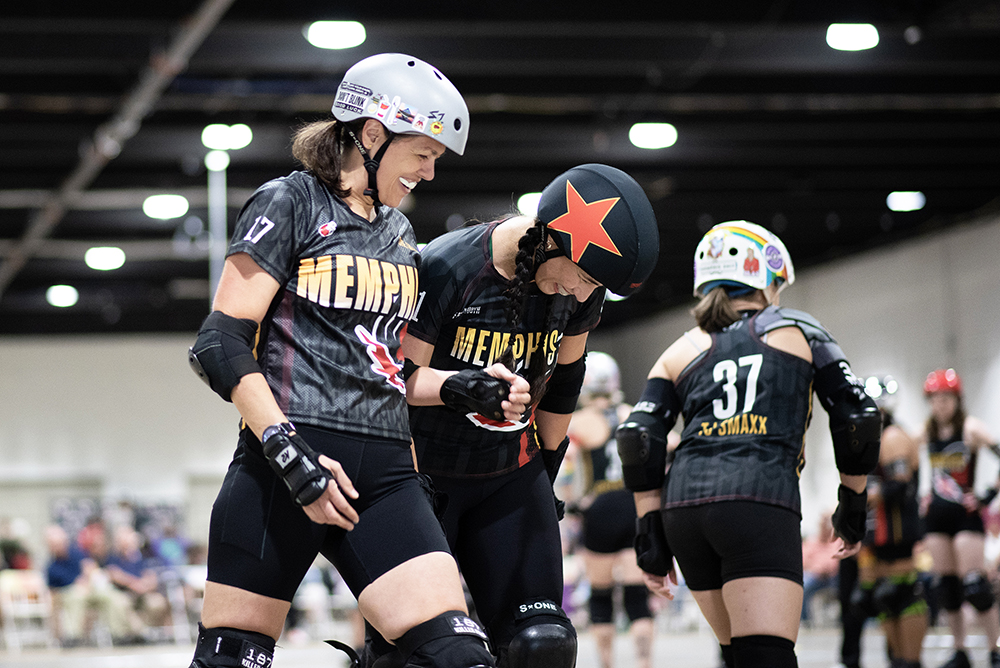

Kailynn Johnson talks about her cover story on the Memphis Roller Derby and the latest on the xAI controversy. Plus, a new documentary on John Lennon and Yoko Ono and why haven’t you seen Sinners yet?
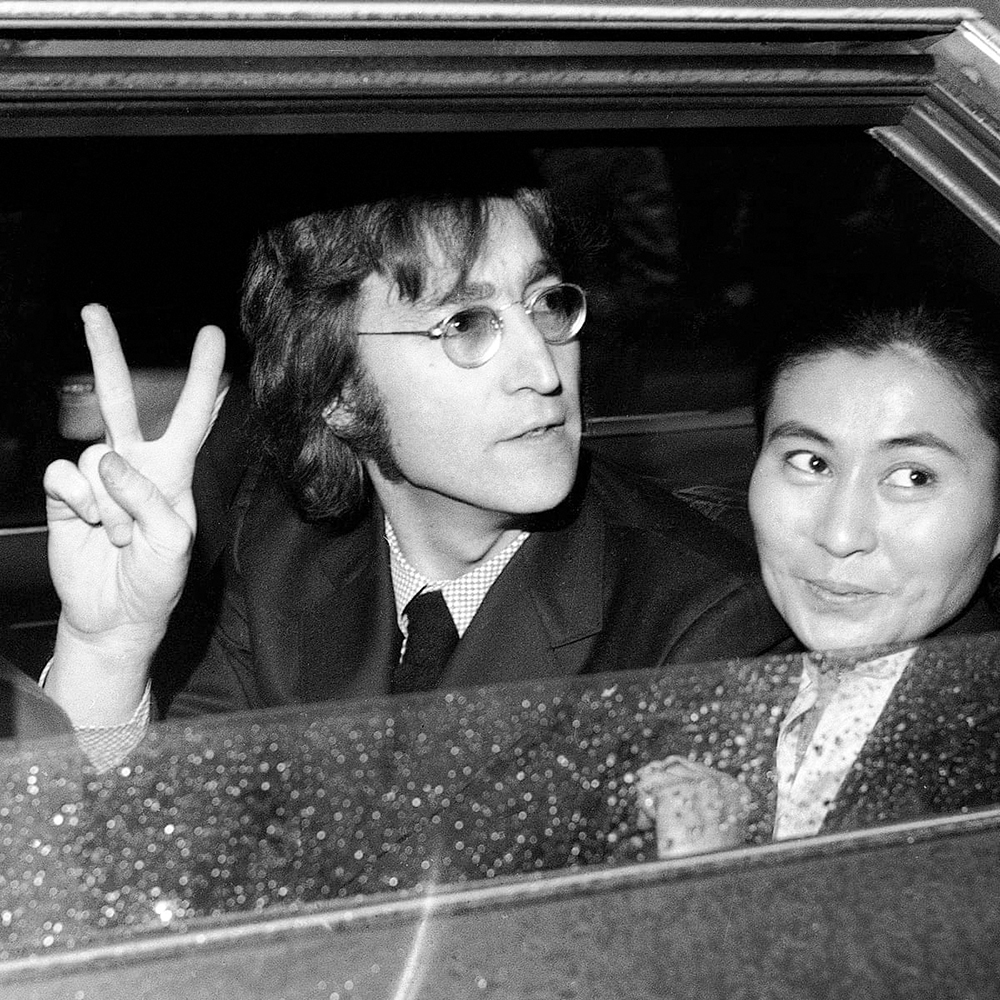
When John Lennon was shot in front of his apartment at New York City’s Dakota building in 1980, Time magazine called it an “assassination.” Noting that the term is usually reserved for the murder of a head of state, the Time editorial board called Lennon “the leader of a state of mind.” Before his murder by a deranged fan, Lennon was a musician — albeit one of the most famous in modern history. Afterwards, he became a martyr.
But martyrdom, it turns out, does not suit Lennon. Sure, they open every Summer Olympics with his secular hymn “Imagine,” but the Beatles Backlash is real, and Lennon’s legacy has gotten the worst of it. Sir Paul McCartney is still playing shows and wowing audiences at age 82. Ringo is still the floppy mascot guy he always has been (and, let’s be clear, one of the greatest drummers of all time). George Harrison’s solo work is now venerated as the best of the post-Beatles output. But spend a few minutes on any social media network these days and you can find people who say the Beatles were massively overrated, and, most cruelly of all, John Lennon would probably be MAGA if he were alive today.
Lennon the iconoclast would have understood. A couple of generations have had the Fab Four’s music shoved down their throats by the Beatles industrial complex. That the band “changed the world” is a Boomer catechism. So when young people hear the music made by a bunch of moldy old white guys, of course they’re predisposed to hate it.
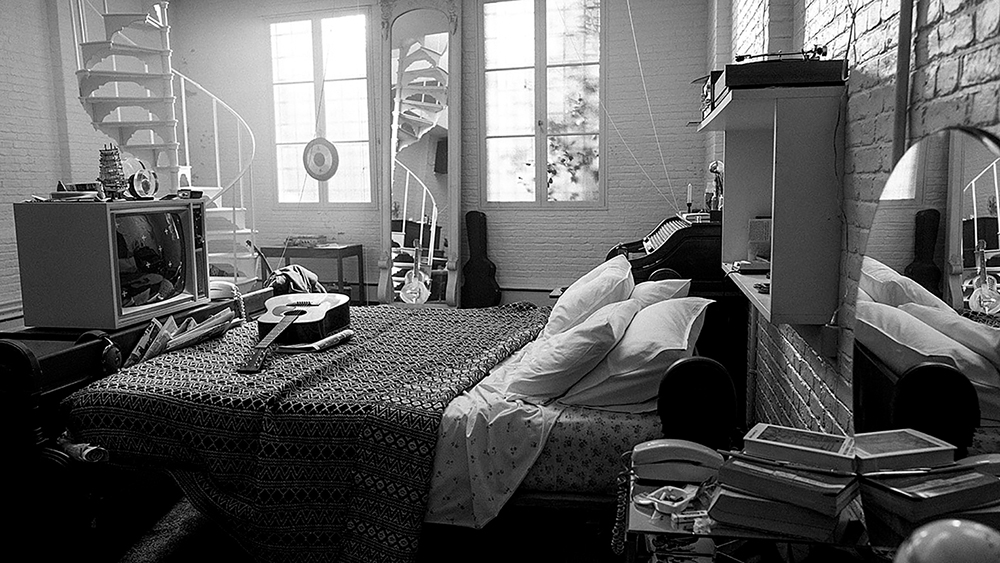
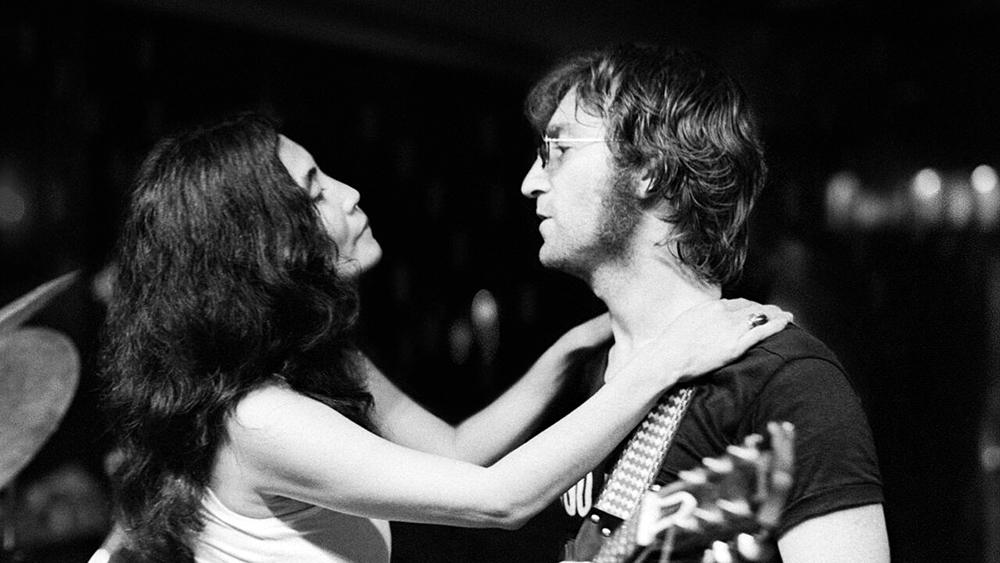
In One to One: John & Yoko, director Kevin Macdonald aims to demystify Lennon and reveal the human being behind the mythical martyr. The meat of the film is performance footage from Lennon’s Madison Square Garden show on August 30, 1972. The concert was a benefit for the victims of the Willowbrook State School in New Jersey, which journalist Geraldo Rivera had exposed as a hellhole where developmentally disabled children were basically imprisoned and left to rot. It was the only full-length concert Lennon played after the Beatles’ Shea Stadium swan song in 1966.
The shocking footage from inside Willowbrook is a part of the hundreds of clips from TV and film that flesh out One to One. Macdonald begins the story in 1971. The Beatles have been broken up for more than a year, and John Lennon has been living with his new wife Yoko Ono in a posh English country estate outside London. As Lennon recounts in a taped interview with a print journalist, Ono was the one who hated living in a mansion and wanted to simplify their lives. On a short vacation to New York City, Lennon and Ono discovered that they loved the hustle and bustle, and the cultural scene. Lennon tells the interviewer that he felt at home because “no one bothered us.” So the couple sold their English estate and moved into a two-room flat in Greenwich Village. There, they mostly smoked weed and watched the TV they had propped up at the foot of their bed, which had been left by the apartment’s previous owner.
A couple’s therapist would have a field day with the picture of John and Yoko’s relationship Macdonald draws. The “Yoko is the villain who broke up the Beatles” narrative was exposed as misogynistic agitprop by Peter Jackson’s epic Get Back documentary series. Jackson found a sound clip where Sir Paul himself calls bullshit on the notion that the group was in trouble because “Yoko sat on an amp.” But Lennon and Ono were clearly codependent, years before the psychological term was coined. By the time they moved to New York, they had both gotten hooked on heroin and kicked the habit. Lennon was tired of being a prisoner of his own fame and fascinated by the avant-garde art world which had embraced Ono, whom he called a “creative genius.” (One of the film’s running gags involves taped conversations between Ono’s staff who are trying desperately to secure a thousand house flies for one of Ono’s art installations.) In a clip from one of the panel-type talk shows that was popular on TV at the time, Lennon opens up about being abandoned by his mother and reconnecting at age 16, only months before she was hit by a truck. For her part, Ono was the daughter of a rich Japanese family who had been made into destitute refugees by the American firebombing of Tokyo. It’s no wonder that two people with abandonment issues would cling so fiercely to each other.
The focus of their lives in 1971 to ’73 was radical leftist politics. Ono’s feminism was a revelation to Lennon, who had been abusive to his first wife Cynthia. Macdonald drives the point home by showing footage of Lennon getting kicked out of the First International Feminist Conference, where Ono was speaking, for being the only man there. Protests against the Vietnam War were raging in America, and the Ono-Lennons were in the thick of it. They were planning an American “peace tour,” where some of the proceeds would have gone to bail funds for imprisoned Black men. Lennon tried to recruit Bob Dylan as a co-headliner but never quite got it done. He wrote a song about the Attica prison revolt that his manager begged him not to perform in public. In the end, the tour plans fell apart. Three months after the Plastic Ono Band’s MSG show, Nixon was reelected in a landslide, and his State Department tried to deport Lennon. The restored concert footage shows what might have been. Lennon and the band (which includes a bass player dressed as Jesus and a Stevie Wonder guest vocal on “Give Peace a Chance”) are loose and playful. Lennon delivers a transcendent version of “Imagine” at a piano while casually chewing gum. One imagines a world where, with a little more practice, they coalesced into a touring powerhouse that freed prisoners across the country. But that is not the world we got.
One to One: John and Yoko
Now playing
Malco Ridgeway
When you’re a film critic, you have to watch a lot of crap. It’s right there in the job description: I watch crap so you don’t have to. But what I don’t think I was prepared for was the sheer shoddiness of some of the films I see. I’m not talking about the kind of corner-cutting you see on low-budget pictures. I’m talking about poor craftsmanship in studio blockbusters. You’d think if you’re spending $200 million on a production, you would at least care enough to make it look good on screen. It’s disheartening to see stuff like Transformers: The Last Knight, where the special effects finale included terrible composite jobs and recycled stock footage. If they don’t care about their product, why should I?
That’s one of the reasons critics like Wes Anderson. His work can be truly great, like The Royal Tennenbaums or Moonrise Kingdom; or divisive, like The Life Aquatic with Steve Zissou or head-scratchingly misguided, like The Darjeeling Limited. But at least it’s never shoddy. Even when it doesn’t work, you can tell he and his team are paying attention to detail, making each individual shot look the best it can.
I guess what I’m saying is, in my reviews, even if you fail, you get points for honestly trying — and deductions for cynical, advertising-driven cash grabs that are directly proportional to the size of your budget. So when I see a film that is both as lovingly crafted and as emotionally resonant as Isle of Dogs, I’m gonna praise it like it was Medicare for All.
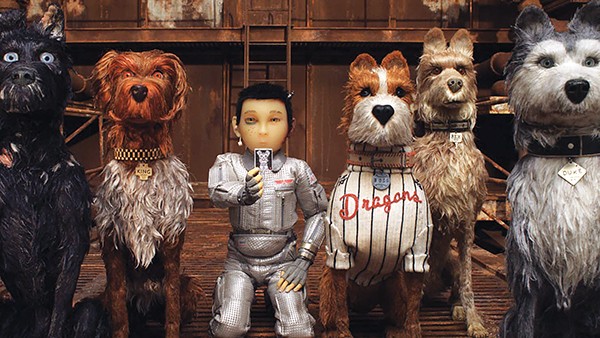
Wes Anderson celebrates his love for dogs and Japanese culture in Isle of Dogs.
This film is about two things: Anderson’s love of dogs, and his love of Japanese culture. Isle of Dogs‘ prologue is a Noh drama about “a little samurai” lovingly staged in flawless stop motion, complete with black-clad stagehands the audience is trained to ignore. Right from the beginning, Anderson uses layers and layers of artifice stacked together to reach for something higher. But his little curlicues, which have in the past threatened to overwhelm the bigger picture, are here focused on the story. The Noh bit sets up the history of the powerful, cat-loving Kobayashi family before flashing forward to the near future, where Mayor Kobayashi (Kunichi Nomura) rules fictional Megasaki City. The mayor uses the cover of a dog flu epidemic to banish all of the city’s dogs to Trash Island, which prompts his ward Atari (Koyu Rankin) to steal an airplane and fly to rescue his beloved pet, Spots (Liev Schreiber).
Atari’s landing skills are not great, so he quickly finds himself needing a rescue. Fortunately, he’s found by a pack of heroic dogs, voiced by Anderson regulars: Chief (Bryan Cranston), Rex (Edward Norton), King (Bob Balaban), Boss (Bill Murray), and Duke (Jeff Goldblum). They take the “Little Pilot” under their paws and help him navigate treacherous Trash Island in search of his lost dog. Meanwhile, Professor Watanabe (Akira Ito) and his assistant Yoko Ono (voiced by the actual Yoko Ono) search for a cure to dog flu, and an American exchange student named Tracy (Greta Gerwig) uses her school newspaper to unseat Mayor Kobayashi.
Anderson careens from one incredible set piece to another. Professor Watanabe’s lab comes right out of a Toho production like The Mysterians. The director uses Kobayashi’s brief visit to a sumo match as an excuse to create a fully realized arena tableau that echoes Raging Bull. The island where most of the adventure plays out provides endlessly varied environments, from orderly stacks of cubes made from compacted trash to a slimy toxic wasteland. Our canine heroes hide out in a hut made of discarded saki bottles that provide a luminous and colorful background. Unlike the finely polished (and criminally overlooked) Kubo and the Two Strings, Anderson foregrounds the stop motion process — like King Kong; the dogs’ fur is in constant motion, disturbed by the animator’s unseen fingers. But there are also some spectacular effects, such as when characters eyes well with artificial tears.
Anderson loves nothing more than making self-contained worlds that play by their own internal rules. But there’s an underlying melancholy to his work. His orderly creations are a way to provide escape from the chaos and pain of the real world, if only for a couple of hours. Isle of Dogs is twee as you would expect from Anderson making a movie about dogs, but the underlying hurt is much closer to the surface here than in an idyl like Moonrise Kingdom, and that gives it a fairy-tale vibe. This is a kids movie that knows the kids can handle the darkness better than the grown ups.
David Leaf and John Scheinfeld’s inept, tiresome new film The U.S. vs. John Lennon depicts John Lennon and Yoko Ono’s 1971 move to New York City and their subsequent involvement in the anti-Vietnam War movement. The couple’s status and media importance also led them into relationships with activists such as Jerry Rubin, Abbie Hoffman, and Bobby Seale of the Black Panther Party. These uneasy alliances between rock stars and rabble-rousers alarmed then-President Richard Nixon and FBI director J. Edgar Hoover, who placed Lennon under FBI surveillance. The government also tried to deport Lennon and Ono in 1972, the year Nixon defeated George McGovern for the presidency.
Lennon’s anti-war demonstrations may merit a historical footnote in yet another book about the significance of the ’60s, but they are wrongly recast as mythic countercultural stands by a parade of talking heads, including McGovern, Gore Vidal, Yoko Ono, and Geraldo Rivera. None of these pundits offers any insights. The only useful head is journalist Robin Blackburn, who correctly points out that Lennon’s vague utopian stance was powerful principally because he was an artist and a good interview subject whose “protests” were funny and strange but not terribly cogent — more conceptual art than political program.
Ironically, Lennon’s best music from this time tells a different story. The hoary old hippie anthems “Imagine” and “Give Peace a Chance” are dusted off once more to establish Lennon as a legitimate revolutionary, but the other Lennon music in the film highlights his sarcasm and distrust of all authority. This is most clear when anti-war and draft-protest footage is scored to “Well, Well, Well” and “I Found Out,” two numbers from Lennon’s 1970 album Plastic Ono Band. These brutal songs condemn mass action in favor of a clear-eyed independence from all things communal and especially political. Yet here they are used, sincerely and mistakenly, as battle cries.
As history, the film is even worse, leaping from 1971 to 1966 to 1970 to 1969 to 1973 in a vain attempt to construct a chain of tangentially related historical events. Rather than illuminating events, such fumbling reinvents history as nostalgia; to claim that Lennon would have made an enormous difference in an election McGovern had already bungled beyond repair is useless ahistorical speculation.
In our current frightening political climate, where government surveillance may soon be a fact of life for everyone, self-congratulatory documentaries like The U.S. vs. John Lennon serve no clear or worthwhile purpose.
The U.S. vs. John Lennon
Opening Friday, October 13th
Studio on the Square